Whether you want a cut or potted, unusual or tried-and-true tree, here are options and care tips
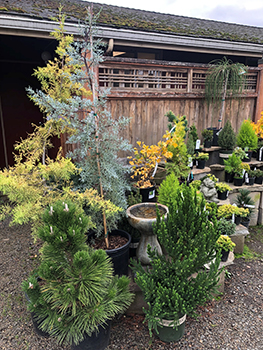 The holidays always seem to sneak up on us, don’t they? If your holiday celebrations include a Christmas tree, this is the perfect time to start considering your options.
The holidays always seem to sneak up on us, don’t they? If your holiday celebrations include a Christmas tree, this is the perfect time to start considering your options.
You don’t need to confine yourself to the typical or traditional Christmas tree. Whether you are craving a distinctive cut tree or a potted tree, here are some options to help you choose a good one, and tips to help you keep it looking its best.
In terms of sales, firs reign supreme. They are what most people picture as the iconic Christmas tree. With their symmetrical shape, tiered branching and straight stems, they display ornaments beautifully.
In the Northwest, the most popular species tend to be noble firs (Abies procera), which are native to the Pacific coast, and Douglas firs, which, with the Latin name Pseudotsuga menziesii (“false hemlocks”), are in the funny position of being neither firs nor hemlocks genetically. They smell wonderful, however, instantly bestowing your home with the scent of a winter trail.
Dougs and nobles last well indoors, but there are some that last even better.
Two types from Turkey, the Nordmann fir (Abies nordmanniana) and a subspecies, Turkish fir (Abies bornmuelleriana) have become popular for strong “keepability.” This means they hold their needles well inside, said Chal Lundgren, recently retired Christmas tree specialist for Oregon State University Extension Service.
“For the consumer, the Douglas fir is faster growing, which makes it cheaper on the lot, but a little more perishable,” Lundgren said. “The Nordmann has been the Mercedes Benz of the Christmas tree world for the Northwest. It’s more expensive, because it takes about four years longer than Douglas fir to mature, and has a better keepability. The third most common is grand fir (Abies grandis), which is kind of intermediate in price, does not have as long keepability but has incredible fragrance.”
Like nobles, grand firs are native to the pacific Northwest.
At Drake’s Crossing Nursery/Hupp Farms in Silverton, Oregon, grand, Nordmann and Turkish firs as its top three Christmas trees.
In Central Oregon, Gary English of Landsystems Nursery in Bend finds Douglas firs don’t grow well, so he focuses on nobles and Nordmann Ffirs. While the noble is “far and away most popular,” Nordmann, a relative newcomer with stiffer needles, is holding its own.
In the coming years, look for Trojan fir (Abies nordmanniana ssp. equi-trojani), a new species Lundgren sourced on an international expedition to Turkey and Georgia. It’s being trialed by Drake’s Crossing/Hupp Farms and other growers this year. Lundgren says it’s drought-resistant, holds needles very well and produces a high percentage of quality trees in the field.
Tips to keep cut trees looking fresh
- Ask the nursery to give your tree a fresh cut at the base before taking your tree home.
- Spraying the underside of needles with an anti-desiccant, such as Wilt-Pruf, can prolong the fresh appearance of the needles indoors. You can do so yourself, or some nurseries, including Landsystems, offer to do so for an extra fee. “Flocking” a decorative snow-effect spray may also help prevent needle drop, said Brenda Powell, owner of Garland Nursery in Corvallis, Oregon, which offers that service.
- Once home, put the tree in water immediately – the first 24 hours are crucial to hydrating the tree, Powell said. Keep it clear of heat vents.
- There’s no need to buy special fertilizer for your tree – just keep it well-hydrated, Lundgren said.
Living trees
There are myriad options for living Christmas trees, but most can only be indoors briefly — a week at the most, experts say.
That’s because the high temperatures are both dehydrating and can cause trees to break dormancy, leaving them vulnerable to frost once outside. If it’s excessively cold, you may want to transition a potted tree into an unheated garage before bringing it outdoors. Even better, keep the tree on your patio or doorstep where you can enjoy it from inside.
Alberta spruce is a traditional choice. Its fine roots help it to transplant well from pots. It is typically sold in sizes from 2–4 feet tall. Keep in mind, you may not want the biggest one you can find. With height comes a heavy root ball, and the plant may be tough to move.
For creative Christmas trees to enhance your landscape for years to come, Powell recommends Cryptomeria Japonica ‘Black Dragon’ and ‘Elegans Compacta’, Arizona and Wilma cypress (Cupressus arizonica and Cupressus macrocarpa ‘Wilma’), Austrian and Japanese black pines (Pinus nigra and thunbergii), and deodar cedars (Cedrus deodara).
Powell recommends soaking your tree before bringing it inside. If it’s below freezing, one should transition it in a garage first. She also suggests not placing it near heat sources. It’s best to decorate it with LED or fairy lights that don’t emit heat.
A year-round houseplant that makes a great tree alternative is the Norfolk Island pine (Araucaria heterophylla), a New Zealand conifer that likes warm temperatures and humidity. Decorate it with lights or garlands, not heavy ornaments. Its supple branches will droop under the weight of the latter.
Tabletop topiary rosemary plants pruned into conical tree-shapes can live indoors for several months with strong light and good air circulation. Like the Norfolk Island pine, they are not for holding ornaments, but they add a festive touch to your tablescape.
One thought on “Christmas tree buying guide”
Comments are closed.

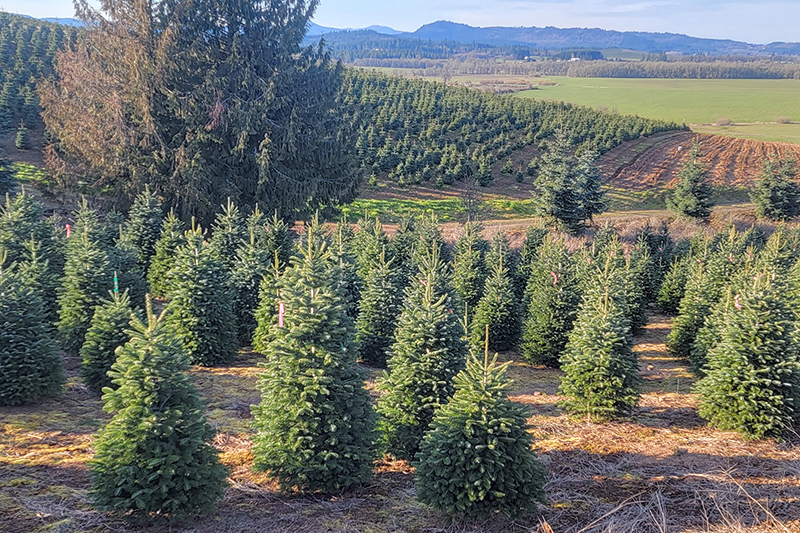
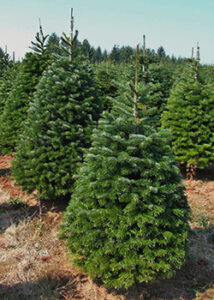
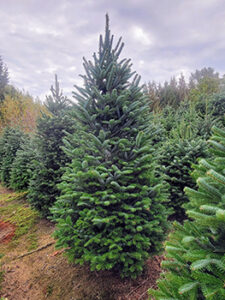
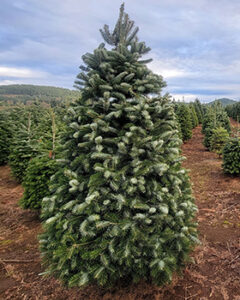
Very concise summary on Christmas trees fo end user